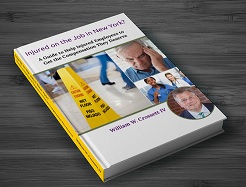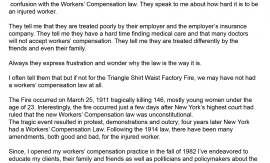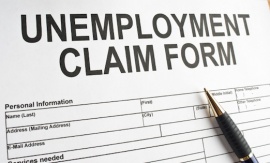A Section 32 settlement is one of many ways in which injured workers’ can receive compensation for their work-related injuries, and is typically done at the conclusion of a case.
However, the Section 32 settlement process must be properly navigated to ensure injured workers receive the compensation they may be entitled to, as well as protect their future medical needs.
A Section 32 settlement is an agreement that results in a final payment to an injured worker. Specifically, a Section 32 settlement is an agreement between an injured worker and their employer’s insurance company or third party administrator who is responsible for processing Workers’ Compensation payments.
A Section 32 settlement cannot be court ordered, and must be a voluntary agreement.
Specifically, a Section 32 settlement covers the Lost Wage portion and/or medical portion of a Workers’ Compensation case.
The amount that an injured worker can receive from a Section 32 settlement is determined by what the insurance company or third party administrator is likely to pay an injured worker in the future as it relates to Lost Wages or medical expenses. However, in some cases, the amount of a Section 32 settlement can be determined by either Reduced Earnings payments, likely PPD payments, or a combination of the two.
PPD Payments refer to Permanent Partial Disability Payments. Permanent Partial Disability Payments are Workers’ Compensation benefits that are provided to injured workers based on permanent physical impairment or reduced earnings. Permanent Partial Disabilities are defined as a work related injury that have a permanent negative impact on a worker’s ability to perform work related tasks.
Section 32 Settlements can consist of Reduced Earnings payments and/or Permanent Partial Disability payments. Reduced Earnings payments refer to the compensation an injured worker receives to make up the difference between what an injured worker was paid at a job before they were injured and the reduced income an injured worker receives after an injury.
For example, John makes $900 a week at his job. John is injured on the job. When John returns to work, he makes $600 a week at the same job. Reduced Earnings payments make up for $200, or 2/3rds of the difference, in weekly income that John isn’t paid after returning to work from his injury.
Injured workers can estimate their Reduced Earnings Payments using MCV Law’s Reduced Earnings Calculator.
Confused by what you can expect from a Section 32 settlement? Contact us for a free initial consultation.
Discussions about a Section 32 settlement most often occur either right before MMI is discovered or permanency proceedings begin. Both MMI and permanency proceedings are relevant in determining future medical expenses that are related to a workplace injury.
MMI refers to Maximum Medical Improvement. Maximum Medical Improvement is a legal term that describes an injured workers’ condition as it relates to their recovery from their work related injuries. If an injured worker has achieved Maximum Medical Improvement (MMI), this means that the injured worker has recovered from their work related injuries and no further improvements can be reasonably expected
Permanency proceedings refer to the legal process that determines the level of permanency resulting from the injury and the impact the impairment has on the workers earning capacity. Permanency is also known as how permanent or long lasting an injured workers’ injuries or related symptoms will affect an injured worker.
The most difficult decision the judge has to make is the percentage of Loss of Wage Earning Capacity (LWEC), which takes in to account vocational factors, as well as your injury.
A Section 32 settlement must first be agreed upon in writing. As part of this written agreement, the New York State Workers’ Compensation Board requires a disclosure form, and an attorney’s fee request. Once the agreement, disclosure form and attorney fee request are filed with the Workers’ Compensation Board, a hearing is scheduled.
This hearing is a significant step toward making the amount of a Section 32 settlement official. At this hearing, a judge reviews the agreement to make sure the Section 32 settlement is fair and reasonable. If all parties involved in a Section 32 settlement sign the agreement, the Section 32 settlement is provisionally approved.
Upon provisional approval, all parties involved have 10 days to call off the agreement. Once this 10 day period is over, the Workers’ Compensation Board makes a formal decision to approve the Section 32 settlement.
Typically, the process from hearing to approved payment takes approximately 3 weeks. The employer’s insurance company or third party administrator must then make Section 32 settlement payments within 10 days of the Workers’ Compensation Board’s decision.
There are a lot of factors that go in to determining the right amount for a Section 32 settlement. Between Lost Wages, potential medical expenses, and complex legalese, there’s a lot for an injured worker to figure out to get the most favorable Section 32 settlement possible.
For over 30 years, MCV Law’s Workers’ Compensation Attorneys have helped injured workers navigate the Section 32 settlement process.
Injured workers should seek professional, experienced legal representation by contacting a Workers’ Compensation lawyer.
 MCV Law Email Sign Up
MCV Law Email Sign Up



I was asked this question recently by an individual who took early Social Security...

















